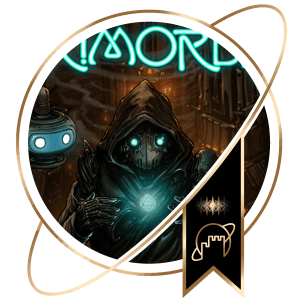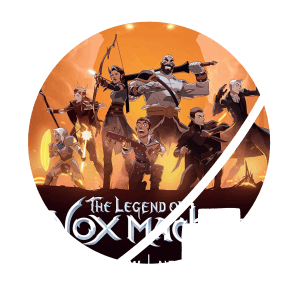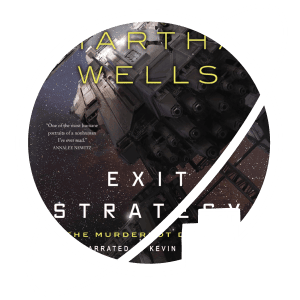Welcome to the Escape Velocity Collection!
We are an opinionated group of friends reviewing all sorts of fantasy and science fiction media. Don’t forget to get to know the curators and visit our curated Collection, where we discuss the stories that never cease to transport us to another world.
Will you escape with us?
LATEST POSTS:
- Video game developed by Blizzard Entertainment
- Directed by Ben Brode, Jason Chayes and Eric Dodds
- Published by Blizzard Entertainment
- Published in 2014
- Trading Card Game, single player and online multiplayer
- Playing time: 5-20 minutes per game, overall literally endless
- Platforms: Android, IOS, Microsoft Windows, MacOS
Hearthstone is the digital version of Blizzard’s Warcraft trading card game (TCG), set in the same universe as its Warcraft and World of Warcraft game series. It features gameplay that is in many ways similar to TGC-giant Magic: the Gathering but tends to be a bit simpler and more forgiving – whilst at the same time, makes full use of the fact that it’s digital by introducing many random elements that wouldn’t work on the tabletop.
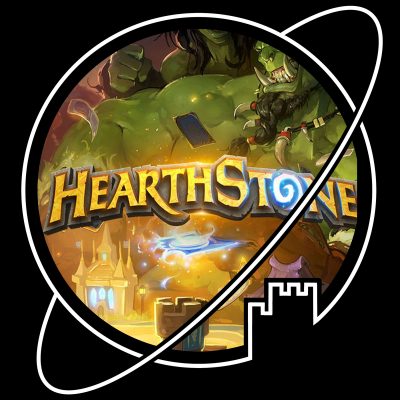

First off, I’m writing my review at the time of the Forged in the Barrens-expansion, and have to admit that I haven’t logged into my account in over a year (I quit the day I started my current job). However, I was a free-to-play player from vanilla in 2014 all the way up to Saviours of Uldum in 2019. I’ve kept up with the game mostly through streams so I feel I’m at least a bit qualified to give an opinion on its current state.
First off, in short, Hearthstone is a game that allows you to collect cards, build decks out of them, and take on the AI or other players with the decks you’ve designed. Cards are mostly obtained through packs, which can be earned in-game or bought with real-world money.
It is a bright, colourful, happy (if not to say: kiddy) TCG, and it embraces it’s silly nature in its art, voice lines, by introducing meme-cards every set, and by not shying away from random elements that might give games an insane twist. Of course, these elements mean that some games are decided by luck rather than skill – but then, that goes for every card game, since the order in which cards are drawn from the randomly shuffled decks is often a deciding factor. And despite the elements of luck, Hearthstone has a large e-sports/competitive scene.
I think compared to other TCGs, Hearthstone offers a somewhat lower barrier to entry, a lot of fun silliness at lower levels, and significant and enjoyable single-player content.
At its core it remains a relatively straightforward deck-building trading card game. Whilst there is a fair amount of new-player content, the meat of the game is supposed to be battling other players and climbing the ranked play ladder. However, the difference in power level between the first deck you designed and the well-honed decks that dominate the metagame is vast. Sadly, net-decking (i.e., copying other people’s decks from the internet) is very prevalent even at lower levels, so very soon, you’ll need to find yourself a real deck to compete. That means either grinding or shilling for cards, and once you start climbing the ladder, you’ll find you face up against one of three, maybe four relatively similar decks almost every game. Here, it is you’ll either (i) find the gameplay repetitive and unnecessarily competitive, and lose interest quickly; or (ii) find you love the challenge of memorising what cards your opponent played, researching the meta and the stats published online, finding that few extra percentage point win rates, fine-tuning your deck against your most common opponents, etc. There is a third option, since Hearthstone offers a number of other game modes – so you might find solace in one of those. But in general, to truly enjoy Hearthstone beyond the new player content, you’ll need to commit.
Three and a half stars might seem a somewhat mellow rating for a game that I’ve put hundreds of hours in over five years without ever spending a single euro. However, since I’ve stopped playing, I’ve realised that whilst I enjoyed the game, it was a huge time sink in the time that I played it – and I needed to keep playing it daily so as not to fall behind the paying players too far. I could have paid, of course, but to be honest I think the model where you buy packs containing random cards with a slim chance of a card you actually want for real world money to be exploitative. I was a student, I had the time then – but Hearthstone is not something I would generally recommend to someone that values their free time highly. At the same time, it is fun and if you are looking for something that is somehow both laid back and competitive, Hearthstone is the game for you.
I’ll add that now is probably the best time ever to start as a new player – there are a lot of single player adventures and there are a lot of rewards for trying things out and climbing through the apprentice ranks. And because there is a bunch of single player content, you can find a good few hours of enjoyment even without ever touching the ranked ladder.
See also:
- Book written by Adrian Stone
- Published in 2006
- Part 1 of the Devil Trilogy
The cult of an evil god threatens to take over the land, in a world where channeling priests can perform great feats of magic. A boy, Marak, is raised in the cult but is saved when the initial uprising is defeated. He is remarkably talented and shows great promise… if only he weren’t tainted by the god that he served. He tries to shake loose his youth in the cult, but must overcome prejudice and heritage to find a place in a society that spurns him.
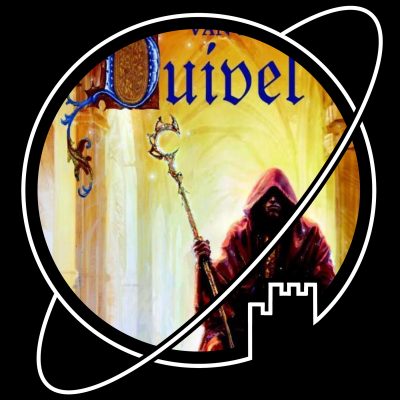

Listened to the audiobook with Frank Rigter. The reader wasn’t this book’s problem.
Before I launch into this review, it is important to know something about the Dutch-language adult (as in, not children’s) fantasy market, and that is that it is virtually non-existent. My guess is that that is probably the case because most people that would be interested in reading fantasy in the Netherlands are more than happy to do so in English.
Despite the adverse market conditions, Ad van Tiggelen (pen name: Adrian Stone) has managed to get himself published – which is quite a feat, both because he is to my knowledge the only Dutch fantasy author with some level of commercial success, and also because of the deep mediocrity of his debut novel.
Profeet van de Duivel is set in a run-of-the-mill fantasy world, though the story’s set up – the boy rescued from the cult but marked by his membership and spurned by his peers – is not that bad. The actual story, however, is. It is a string of poorly re-used tropes and clichés, with flimsy worldbuilding, shallow characters, non-existent mystery and mediocre prose. Most names in the book sound like Italian desserts or Milanese fashion brands. The ‘twist’ at the end of the book is both highly predictable and entirely un-foreshadowed (remarkable, isn’t it?).
One of the book’s worst aspects is its treatment of female characters: within the first sentence of introduction of literally every female character, you know whether or not she is pretty, which seems to be the only aspect of any female character that matters. Armana, supposedy one of the main characters, is so damn sexy that literally every male character that comes in contact with her, wants to have sex with her. That is also about the extent of her influence on the plot – she makes the male characters in the party dislike each other because one of them got into her pants, and the others didn’t.
A star-and-a-half-rating might seem harsh, and maybe it is. Profeet van de Duivel is not absolute trash. It is functional, as a fantasy book. That is about as far as I am willing to go. I tend to be able to find some merit in most of the books I dislike – original settings, strong prose, an interesting character here and there. Often, I can see why, even though a book is not for me, it might be a recommendation for others.
Profeet van de Duivel has none of those redeeming factors. It is just mediocre in every aspect. I would recommend literally no one to read Profeet van de Duivel.
I would not even recommend it to Dutch readers interested in reading something Made in Holland. If you want that, try Thomas Olde Heuvelt’s HEX, which is original and actually features some delightful Dutchness.
Sorry Ad – but everyone, give Profeet van de Duivel a miss.
See also:
Tagged:
- Book written by Brandon Sanderson
- Published 14 October 2008
- Part 3 of the Mistborn Trilogy
With the mists killing, the ashfalls mounting, and the Deepness released, it appears the world is slowly coming to an end. Unable to beat their foe by sheer allomantic force, Vin and Elend follow a trail left by their predecessor, the Lord Ruler, in the hope that he might aid them from the grave and help them cure their mistakes. As the battle for what is left of the Final Empire nears its climax, the powers of men and mists, Koloss and Kandra, Inquisitors and allomancers all prepare for one final clash.
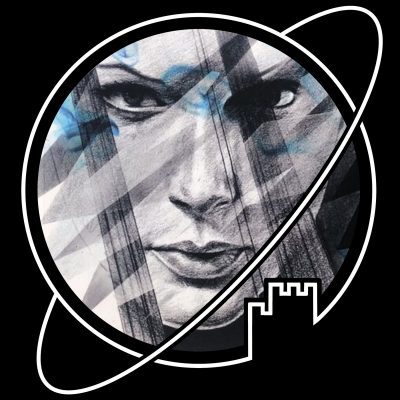

The Hero of Ages does what by now we’ve come to expect from the Mistborn Trilogy: it delivers long and detailed action scenes in solid prose, a highly original (if not always very engaging) world, a complex but well-functioning plot, and so-so characters. In that sense, I have very little to add to my reviews of The Final Empire and The Well of Ascension.
The Hero of Ages is somewhat different, however, in that it is the final part of the trilogy. In this book, Sanderson has got to deliver on two books of build up (if that is what you can call it), and finally solve some of the mysteries he’s been kicking out in front of him every time they come up in the story.
The good news is that Sanderson finishes all the arcs. The bad news is that the problem that plagued The Well of Ascension – the fact that the stakes could somehow never live up to those of the first part – haunts The Hero of Ages as well. The Lord Ruler is well out of the picture, and so are Straff and Zane Venture, the main antagonists of The Well of Ascension. The main antagonists introduced in the third installment are even less impressive when measured against the god-emperor of the first part. Of course, the real enemy of the series also finally steps out of the shadows – but because it seems to take about half the book for the characters to figure out who they are actually fighting, much of the first half of the book is a relatively mediocre set-up. It feels like the characters are just going through the motions and have a number of revelations thrust upon them (rather than actually discovering the clues themselves). Especially the sub-plot with Spook in Urteau feels entirely superfluous.
That also leads into another problem (and there are some slight spoilers here). Almost all of the book’s central characters are some form of mage – be it an allomancer or feruchemist. Elend is one of the few characters that wasn’t, which made him an interesting mirror – what does it mean to not have powers in a world ruled by allomancers? However, in this book, Elend has become a Mistborn, and, for some reason, a more powerful one than Vin. It takes away the one aspect of his character that made him interesting. A similar fate befalls Spook, the one member of the crew that always felt left out, because his power, he felt, was the least useful. Sanderson chooses to focus on him, and rather than making him interesting through his character, he makes him extra powerful and then changes his personality to fit that image. The above examples suggest that Sanderson is perhaps more interested in writing cool wizard-ninjas than in writing moving characters.
The conclusion to the book is not unsatisfactory, but by the time I got there, I was reading just to finish. Overall, I would recommend The Final Empire, for the interesting world Sanderson created, but not the other two installments in the Mistborn Trilogy. Jop and I have written out a more in-depth conversation on the Trilogy – but mind the spoilers!

This book, just like the rest of the trilogy, had its ups and downs for me. The scale of the conflict is very large, almost cosmic. The ending came somewhat abrupt, but most mysteries of the trilogy were neatly tied up. I enjoyed Sanderson’s plotting skills in this regard, even though I did not necessarily like all of his choices. On the whole, I’d probably give this trilogy a 3.5 star rating, the same rating I give The Hero of Ages.
Once again, it is undeniable that Sanderson’s prose reads easily. Action scenes, dialogue, exposition, it is all smoothly written. In addition, the worldbuilding and most plot elements are still well thought out and original.
Religion and faith are important themes in the Mistborn trilogy, but especially in this final book. Being a religious scholar, I could appreciate this. Even though I wasn’t ultimately blown away by the way these themes were handled, I suspect others might like the questions that are raised. What does it mean to have faith? And what do religions have to offer to society?
Tagged:
- Book written by Brandon Sanderson
- Published 21 August 2007
- Part 2 of the Mistborn Trilogy
“You don’t understand what I did for mankind…You have doomed yourselves” was not what Vin expected the Lord Rulers final words to be, and they keep hanging ominously in the air as chaos spreads over the land in the wake of his passing. Elend tries to rule (and defend) Luthadel, putting his theories to practice, while Vin goes looking for the power in the Well of Ascension, hopefully to rid the land of the ash, mist and rampaging Koloss that plague it.


Many of the things I wrote regarding The Final Empire still hold true for The Well of Ascension. The setting Sanderson has created is very original. His magic system is interesting. His prose is solid. His plot works, there are a number of interesting and well-foreshadowed twists. It is lacking somewhat in soul and feeling. However, where The Final Empire was carried by the force of its premise and a fascinating central conflict, The Well of Ascension just doesn’t have the same things going for it.
There are two main things that go wrong. Firstly, with The Final Empire, Brandon Sanderson wrote himself into a corner. For if the crew beats the arch-villain in your first installment, what happens next? The Well of Ascension could have been an amazing opportunity for Sanderson to show that he is a true trope-breaker. Instead, we get a book full of lacklustre administrative challenges and personal doubts, featuring the same characters that murdered a literal god in the previous book. It is unimaginably jarring reading about Vin listening to petty politics in a parliamentary assembly, or Elend worrying about the next speech he is about to give. There is some charm, of course, to asking the question – what do you do after toppling the evil emperor? Most stories don’t venture there. But the complete collapse of the scale of the series makes the whole thing seem banal. If Vin and the crew were out of the picture, heroes of legend to look up to, and The Well of Ascension was just about Elend, it might have worked. Then again, Elend…
That neatly leads into the second problem. Vin and Elend. One of the core questions of the book is whether Vin can learn to trust Elend. The book is supposed to be about their relationship. But there just never seems to be a reason for Vin to actually like Elend. It feels like they should hardly be able to stand being in the same room. Instead, their love never really gets questioned (this is a theme that runs through to the next book as well).
Overall, with the collapse of the story’s scope and the regrettable choice to focus on Vin and Elend’s poorly written relationship, The Well of Ascension ends up being quite a lot worse than The Final Empire was. I’m in the final chapters of part three of this trilogy as I’m writing this review. We’ll see if the ending to the whole thing makes it worth dragging yourself through the second installment…

This book, just like the rest of the trilogy, had its ups and downs for me. The political plot is not particularly strong and (unfortunately for me) the story also contains an evil imposter mystery subplot. The plot twist at the end annoyed me at first, but gets more context in the final part of the trilogy.
Once again, it is undeniable that Sanderson’s prose reads easily. Action scenes, dialogue, exposition, it is all smoothly written. In addition, the worldbuilding and most plot elements are well thought out.
The thematic focus in this book is on identity. Normally, I would cheer at this theme, but in this book it was poorly executed. Vin’s inner conflicts felt completely forced, a disservice to her character. In that respect, the identity crisis worked better in Elend’s story, but was not particularly inspiring.
All in all this sequel is a fine read, but not as good as The Final Empire.
Tagged:
- Book written by Christopher Paolini
- Published 8 November 2011
- Part 4 of the Inheritance Cycle
The Varden are slowly conquering their way across Alagaesia, taking Galbatorix’ cities one by one. But even if his hold on Alagaesia is loosening, his lieutenants are many and his power undiminished. Soon, Eragon will have to face the dark lord himself – but does the young dragon rider stand a chance against the ancient king on his own?


By the point I reached Inheritance, the only reason I was still reading was because it felt like Paolini would somehow have beaten me if I didn’t finish the Inheritance Cycle… again.
Inheritance feels somewhat disconnected from the previous books in the Cycle, mostly because the story seems to have rounded a corner – the Varden are now winning, Murthagh is no longer interesting enough as an antagonist, and Eragon can’t claim to be inexperienced. However, the previous books have failed to lay the groundwork for the climactic events of the final installment.
As a result, Inheritance has a wandering plot that feels like Paolini was groping in the dark as to how he should end the whole thing, trying to fit in pieces of story he wanted to include without knowing how to bring them together properly. It feels a bit like a D&D campaign where the players have run away with the story and the DM is just along for the ride. The results are sometimes jarring. New antagonists are introduced and dealt with in a short space. Loose ends from the previous books are tied up neatly but unsatisfactorily, making the reader feel like the ending was overhauled compared to Paolini’s original intention. There is another sub plot in Dras Leona where Eragon nearly meets his maker fighting previously unmentioned enemies, making you question whether anyone in their right mind would let him anywhere close to Galbatorix. Eragon travels to Vroengard for the second half of the prophecy, but the whole thing seems shoehorned in to make it remotely believable that Eragon would stand a sliver of chance in the final confrontation. The final confrontation, when it comes, has such a ‘gotcha!’ as its resolution that I genuinely wanted to throw things in frustration.
The final installment of the Inheritance Cycle makes the whole series worse, for it doesn’t deliver on either the buildup or the set up of the previous books. Having finally powered my way through the whole thing, it is frustrating to look back at Eragon, which I didn’t think was awful, and think back to when I enjoyed it, knowing now that none of it would lead anywhere.
There is a lot of generic high fantasy out there, and the Inheritance Cycle is not near the top. Even if you started Eragon way back when and never finished – keep it that way. There is no satisfaction to be had in Inheritance.
Tagged:
- Book written by Christopher Paolini
- Published in 2008
- Part 3 of the Inheritance Cycle
Reunited with his brother Roran after the Varden’s first battle with Galbatorix’ armies at the end of Eldest, Eragon and Roran go on a quest to save Katrina, Roran’s betrothed, from the clutches of the Ra’zac. Meanwhile, all nations of the land make ready for war, and both Eragon and Roran will have to earn their respective places among the Varden rebel armies.
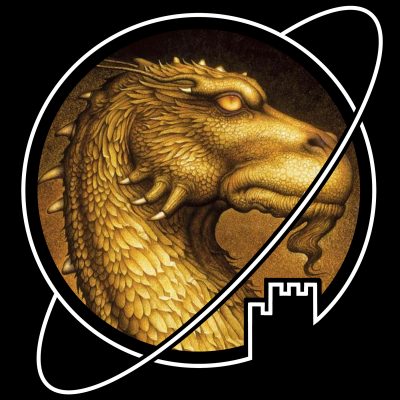

If you’ve gotten through both Eragon and Eldest and you are still interested in reading Brisingr, it is unlikely that my opinion will sway you either way. For me though, Brisingr is where the Inheritance Cycle started to slip from mediocre to bad.
In the first place, I think Brisingr and Eldest aren’t fundamentally different stories (I keep forgetting in which order events occurred), and should probably have been a single book, as was originally planned. There is a lot of extra plot in Brisingr – especially the Ra’zac quest, most of Roran’s story line, and the sub-plot with Galbatorix’s supersoldiers – that add to the page count without bringing the story much further. There are some reveals in this book that feel like they should have occurred in the second installment, and Eragon moves all over the world to be places the plot requires him to be. Brisingr feels ‘inefficiëntly’ written, and maybe an editor should have cut most of it.
Secondly, there are a couple of questionable choices that drive the rest of the Cycle – such as Roran’s superhuman killing power, the waste of the first part of Celembum’s prophecy, and the reduction of dragons to Pokémon through the Eldunari system. It may be that I wasn’t as positively disposed towards the series at this point, but these kinds of decisions took away the hope I had that the series would improve with Paolini’s age. It sadly didn’t, and I would discourage most readers from spending their time on Brisingr.
Tagged:
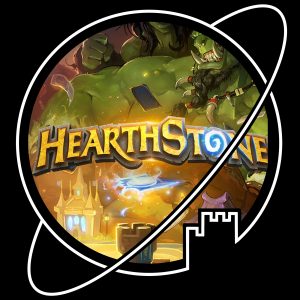
Review: Hearthstone – Blizzard Entertainment
Blizzard’s TGC based in its Warcraft universe introduced thousands to card games and pushes the boundaries of the genre by taking full advantage of its digital medium.
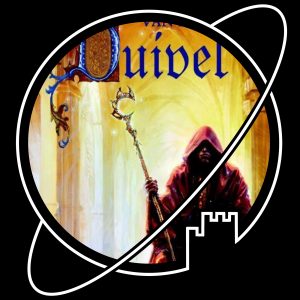
Review: Profeet van de Duivel/Devil’s Prophet – Adrian Stone
Part one of the Devil Trilogy – Marak, a talented acolyte, is saved from the cult of an evil god, but must overcome prejudice and heritage to find a place in a society that spurns him.

Review: The Hero of Ages – Brandon Sanderson
Part three of the Mistborn Trilogy – With the mists killing and the ashfalls mounting it appears the world is slowly coming to an end. Unable to beat their foe by sheer allomantic force, Vin and Elend follow a trail left by their predecessor in the hope that aid might come from beyond the grave.
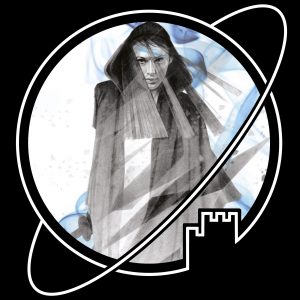
Review: The Well of Ascension – Brandon Sanderson
Part two of the Mistborn Trilogy – Vin must find a way to defeat the Deepness, and Elend must find a way to rule Luthadel without letting go of his principles.

Review: Inheritance – Christopher Paolini
Part four of the Inheritance Cycle – As the Varden gain ground the inevitable clash between Eragon and Galbatorix looms on the horizon. But how can the young rider defeat the ancient king?

Review: Brisingr – Christopher Paolini
Part three of the Inheritance Cycle – Reunited with his brother Roran, Eragon must take on old enemies to save Roran’s betrothed – and both brothers must earn their place in the Varden for the upcoming war.

